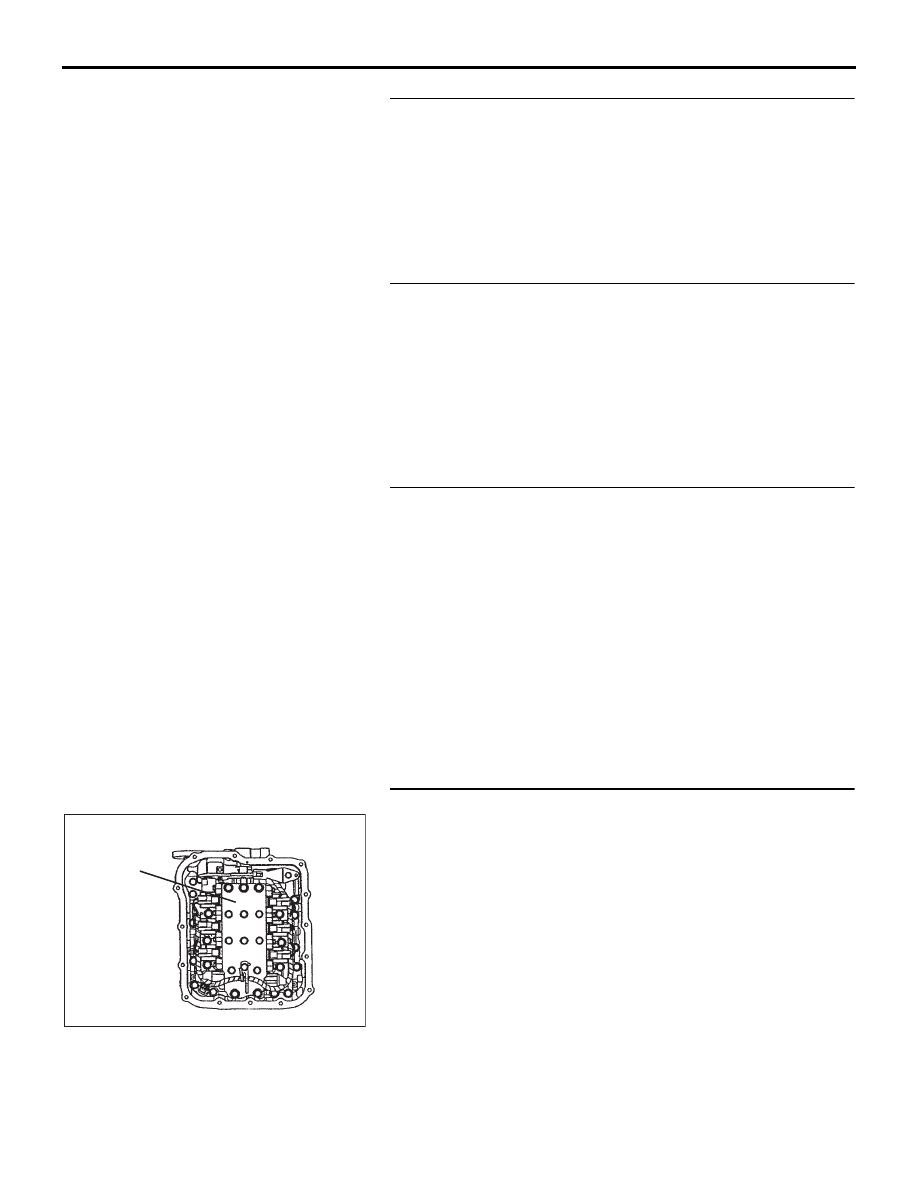Mitsubishi 380. Manual - part 421

AUTOMATIC TRANSMISSION DIAGNOSIS
AUTOMATIC TRANSMISSION
23A-224
STEP 2. Check the hydraulic pressure (for reverse clutch).
Measure the hydraulic pressure for the reverse clutch when the
selector lever is at the "R" range, and check if the hydraulic
pressure is within the standard value. Refer to
Hydraulic Pressure Test.
Q: Is the hydraulic pressure within the standard value?
YES : Go to Step 3.
NO : Go to Step 5.
STEP 3. Check the hydraulic pressure (for low-reverse
brake).
Measure the hydraulic pressure for the low-reverse brake when
the selector lever is at the "R" range, and check if the hydraulic
pressure is within the standard value. Refer to
Hydraulic Pressure Test.
Q: Is the hydraulic pressure within the standard value?
YES : Go to Step 4.
NO : Go to Step 5.
STEP 4. Check the reverse clutch system and low-reverse
brake system.
(1) Remove the valve body cover and valve body. Refer to
<F5A5A>, Transmission Assembly and GROUP
23B, Transmission
.
(2) Blow 108 kPa (15psi) compressed air into the reverse
clutch oil orifice of the transmission case. Then check if the
reverse clutch piston moves and air pressures are
maintained in that condition. Repeat for the low-reverse
brake.
Q: Are the reverse clutch, low-reverse brake or both air
pressures maintained?
YES : Go to Step 5.
NO : Go to Step 6.
STEP 5. Disassemble and clean the valve body.
Check the O-ring installation bolts for looseness and valve
body for damage. Repair or replace the faulty parts. Refer to
GROUP 23B, Valve Body
.
Replace the valve body assembly if the damages are thought
to be irreparable. Then check the symptom.
Q: Is the symptom eliminated?
YES : The procedure is complete.
NO : Start over at Step 1.
VALVE BODY
ASSEMBLY
10DB117A